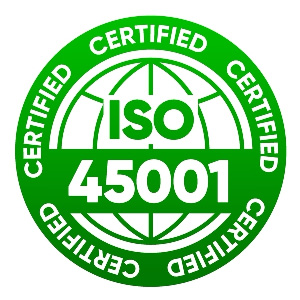Manual Handling
- Duration: Half Day
- Price: 50 euro (blended ) 50 euro in class
- Participation: max 12 persons
- Certification: Certificate of Attendance valid for 3 years
- Available languages: All languages
- Available online (as a webinar and blended learning)
This course is NOT a Patient (People) Handling course and is not suitable for candidates who will move people (Patient Handling course is a full day course)
Assessment: Assessment is by a theory and practical test.
Available locations:
- In our training centre Ireland TT Ltd, Unit 11C Parkmore Industrial Estate, Long Mile Road, Dublin 12
- Courses are available across Ireland
- at client’s premises nationwide
Available languages: all languages
Available online: YES
Price includes booklets and refreshments. Fully compliant Manual Handling Training Certificate valid 3 years (subject to passing course assessment) and receipt issued after training course.
The Safety Health & Welfare at Work (General Applications) Regulations 2007 Chapter 4 of part 2 provide direction and guidance on assessing the risk of personal injury during manual handling operations;transporting or supporting loads by hand or by 'bodily force'.
Course Content:
- Legislation (Common Law 2005 Safety, Health & Welfare at Work Act / 2007 General Applications Regulations)
- Anatomy of the spine and mechanism of injury including Anatomy and Physiology
- Manual Handling Risk Assessment and Hazard Identification
- Ergonomics: Practical application to workplace environment
- Different Type Of Lifts (Lifting, Moving, Carrying, Push and Pull)
- Fitness and flexibility requirements for safe manual handling
- Specific manual handling hazards relevant to the workplace
- Individual risk factors
- Procedures for dealing with unfamiliar loads
- Practical Demonstration Of Safe Lifting Techniques By Instructor
Comfortable clothing.
Special Instructions for This Course:
Any special needs / requirements should be identified at time of booking.
Fully compliant Manual Handling Training Certificate valid 3 years (subject to passing course assessment) and receipt issued after training course.
Training is delivered by a NFQ Level 6 qualified
instructor.
On completion of this Manual Handling course participants will be able to:
- Recognize a load which is too heavy or awkward
- Understand the limitations of the spine and muscular system
- Conduct a manual handling risk assessment
- Lift and handle loads safely
- Dangers of careless and unskilled methods
- Manual handling legislation
- Hazard Identification and Risk Assessment
- Anatomy of the spine and muscular system
- How the body is harmed through incorrect manual handling techniques
- Importance of physical fitness
- Personal protective equipment
- How to handle loads safely
- Practice in safe manual handling of loads to include:-Lifting to and from ground level, Lifting to and from a height, Pushing, Pulling.
- Fully compliant Manual Handling Training Certificate valid 3 years (subject to passing course assessment) and receipt issued after training course
This course is NOT a Patient (People) Handling course and is not suitable for candidates who will move people (Patient Handling course is a full day course)
Best Driver CPC Training in Ireland – Expert & Approved
Best Driver CPC Training in Ireland – Expert & Approved in Dublin in English, online booking
 EN
EN
 PL
PL
 PT
PT
 RO
RO
 PT
This course is delivered in Portuguese
PT
This course is delivered in Portuguese ES
This course is delivered in Spanish
ES
This course is delivered in Spanish AR
This course is delivered in Arabic
AR
This course is delivered in Arabic RU
This course is delivered in Russian
RU
This course is delivered in Russian





